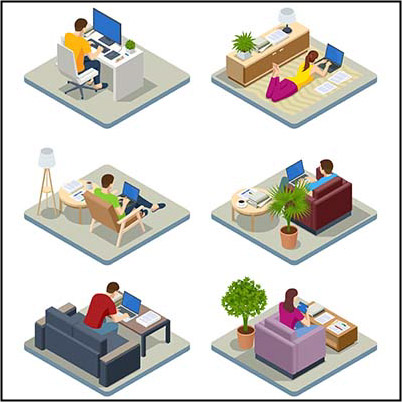Many companies have struggled to maintain operations during the COVID-19 pandemic, but remote technology solutions have allowed many more to adapt and keep going. Remote working and the use of remote technology require new policies to be put in place. It’s important to get these right and to know which policies are helpful and which can harm. Let’s look at these policies and how your remote technology can be used optimally.
Management Tools and Practices
All businesses value productivity and no business wants it to drop. It’s also true that nobody likes to feel that there’s a manager scrutinizing their every move. It’s one thing to monitor your staff and keep them motivated, but if they start to feel as if someone’s breathing down their neck they can become stressed or even feel harassed. If you use remote monitoring tools unwisely or excessively, some might feel it’s time to move on to a more congenial work environment. These days there are more remote jobs than ever, so moving on to a job where the management style isn’t so heavy-handed might be worth it for them.
There’s an alternative to intrusive monitoring. A project management platform will allow you and your staff to keep track of how well on-target they are, making them accountable without being constantly watched and checked on. It’s easy for management and employees to see who’s doing what, and where things might be behind schedule or off-track. If a problem arises, perhaps a chat about the problem and how to resolve it will be in order.
Remote Communication Tools for In-House Use
It’s become common practice to use remote communication tools when staff are out of the office or working from home. A unified communications platform can still be very useful when everyone’s back in the office. It’s not only for real-time collaboration when people can’t get together in the same place.
A unified communications platform has a number of uses in-house. It might be convenient to have a meeting without everyone trekking off to gather in a meeting venue. It’s easy to use instant messaging to liaise with colleagues, remote working or not. Communications platforms such as Zoom, Microsoft Teams and Slack can be very useful within a workplace, as well as when it’s necessary to reach beyond the office. You can also use a hybrid model, so that when the pandemic is over you can still maximize operational efficiency when people are off-site.
Security Benefits from Zero-Trust Policies
Remote working has highlighted the importance of good security, as people working from home (often using their own devices) log in to access company data from multiple locations. It’s essential for employers to have information on who’s logging in and why they’re accessing the data on your network.
A zero-trust policy is useful here. It doesn’t mean that the staff aren’t trusted. It’s about not taking risks, because the consequences can be so damaging. With a zero-trust approach, all devices used to access the network must be verified and approved before access to data is granted. Strong measures are vital to keep an organization’s data safe from contemporary cyberthreats, such as ransomware attacks.
Quikteks can assist you with the setup of remote technology and hybrid solutions, from procurement to technology monitoring and maintenance. In these challenging times, everyone needs to do whatever it takes to both survive and thrive. For more information, reach out to us at (973) 882-4644.

